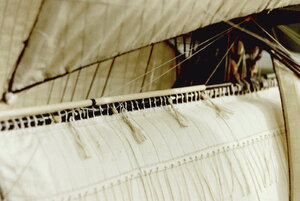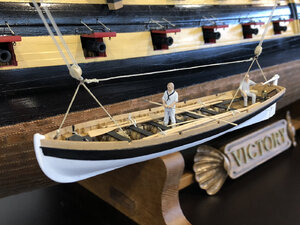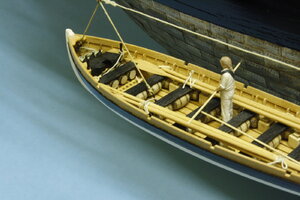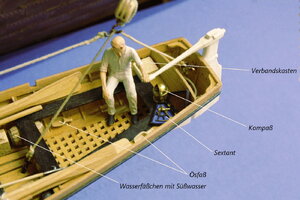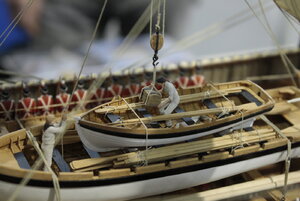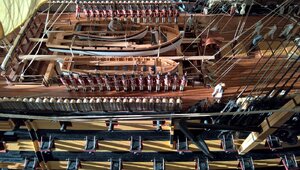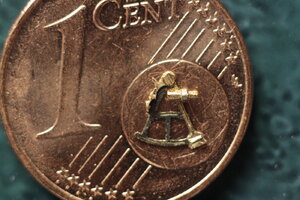Thank you, Hartmut, for answering. I logged in and saw the pictures of his process. It is ingenious. I could not understand what was meant by wood primer. I’ve not used a product like that which primes wood and is not opaque. Does it set fast? Does it not stick to the plastic which holds the water? So many questions because I’m on my last mast and will start on my sails nächste Woche.Hi Vfordyce,
he applied it over both sides of the entire sail. I think wood primer is the right translation for "Holzgrundierung". It is not wood glue. Regarding the question of whether it's oil or water based, I have to ask Manfred. Of course we both (Manfred and myself) are happy to answer your questions. Couriosity is welcome.
Regarding the "Baubericht" (= build log) I have to apologize a little bit, because what I am posting at the moment in small pieces in my home forum cannot be regarded as a build log in the exact meaning. The model was built over 40 years from 1972 on to 2012. In 1972 Manfred could not imagine that something like build logs are possible at all. And he was far away to think of a publication of his build in form of a book. So he took some photos of the building process and explained it in a nutshell. So my "build log" in the german forum is little more than a subsequent very brief construction report, which mainly consists of pictures.
Greetings, Hartmut
-

Win a Free Custom Engraved Brass Coin!!!
As a way to introduce our brass coins to the community, we will raffle off a free coin during the month of August. Follow link ABOVE for instructions for entering.
-

PRE-ORDER SHIPS IN SCALE TODAY!
The beloved Ships in Scale Magazine is back and charting a new course for 2026!
Discover new skills, new techniques, and new inspirations in every issue.
NOTE THAT OUR FIRST ISSUE WILL BE JAN/FEB 2026
You are using an out of date browser. It may not display this or other websites correctly.
You should upgrade or use an alternative browser.
You should upgrade or use an alternative browser.
HMS Victory by Manfred Burkert, Scale 1:57
- Thread starter Cirdan
- Start date
- Watchers 18
-
- Tags
- scratch built victory
I’ve not used a product like that which primes wood and is not opaque. Does it set fast? Does it not stick to the plastic which holds the water?
The product he used does not stick to the plastic and must be opaque. I have not yet used the method myself, and it may be possible that he meant pore filler rather than wood primer. The pore filler I used for the hull of my model 20 ears ago was opaque. I've sent a whatsapp to him with the questions.
Hartmut
Cool. Danke!The product he used does not stick to the plastic and must be opaque. I have not yet used the method myself, and it may be possible that he meant pore filler rather than wood primer. The pore filler I used for the hull of my model 20 ears ago was opaque. I've sent a whatsapp to him with the questions.
Hartmut
I could not understand what was meant by wood primer. I’ve not used a product like that which primes wood and is not opaque. Does it set fast? Does it not stick to the plastic which holds the water?
This is the product he used:
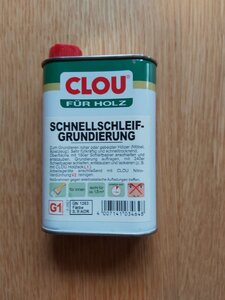
"Schnellschleif-Grundierung“ means: a primer, which can be sanded very soon after application. After 1 hour you can sand it and therefore it must be dry after 1 hour.
From the description: "Sehr füllkräftig und schnelltrocknend“. "Füllkräftig" means that this primer has undoubtedly pore-filling qualities. I personally think, that the pore-filling effect is essential for the stiffening of the sails. It is probably not useful to use primer in the sense of varnish or lacquer. So if you use any other product it will be best to use something like pore filler.
Hartmut
By the way: when making his billowed sails, Manfred used the method described in Karl Heinz Marquardt's book on rigging in the 18th century. How to make the belly of a sail appear perfect is his own invention. Marquardt's book is available in english language.
We do not have that product here. Do you know if it’s opaque or transparent? It seems opaque would color the sails too much. Someone on another thread mentioned Minwax sand primer. I wonder if that’s the same thing? But you probably don’t have that in Germany. Vielen Dank für deine Antwort und Hilfe. Thanks for your answer and help.This is the product he used:
View attachment 177344
"Schnellschleif-Grundierung“ means: a primer, which can be sanded very soon after application. After 1 hour you can sand it and therefore it must be dry after 1 hour.
From the description: "Sehr füllkräftig und schnelltrocknend“. "Füllkräftig" means that this primer has undoubtedly pore-filling qualities. I personally think, that the pore-filling effect is essential for the stiffening of the sails. It is probably not useful to use primer in the sense of varnish or lacquer. So if you use any other product it will be best to use something like pore filler.
Hartmut
We do not have that product here. Do you know if it’s opaque or transparent? It seems opaque would color the sails too much. Someone on another thread mentioned Minwax sand primer. I wonder if that’s the same thing?
As far as I know it is transparent (sorry, i confused the meaning of opaque in one of my last posts). "Sand primer" seems to be at least a similar product to the one Manfred used. I would simply recommend experimenting here.
We do not have that product here. Do you know if it’s opaque or transparent? It seems opaque would color the sails too much. Someone on another thread mentioned Minwax sand primer. I wonder if that’s the same thing? But you probably don’t have that in Germany. Vielen Dank für deine Antwort und Hilfe. Thanks for your answer and help.This is the product he used:
View attachment 177344
"Schnellschleif-Grundierung“ means: a primer, which can be sanded very soon after application. After 1 hour you can sand it and therefore it must be dry after 1 hour.
From the description: "Sehr füllkräftig und schnelltrocknend“. "Füllkräftig" means that this primer has undoubtedly pore-filling qualities. I personally think, that the pore-filling effect is essential for the stiffening of the sails. It is probably not useful to use primer in the sense of varnish or lacquer. So if you use any other product it will be best to use something like pore filler.
Hartmut
Thank you.As far as I know it is transparent (sorry, i confused the meaning of opaque in one of my last posts). "Sand primer" seems to be at least a similar product to the one Manfred used. I would simply recommend experimenting here.
for plastics, I found that an automotive product called "Plasti-coat " which is made for automotive plastics and will take any type of topcoat without allowing the topcoat, which can be anything from Lacquer to waterbased paints to bond and the removal of masking tapes, ie. Frog tape, taymia tapes, painter tapes, 0r masking tapes, to be affected when the tape is peeled off. I hope this helps you guys who occasionally work with plastics. Mikeyt
of tape the r
of tape the r
Good afternoon to all of you,
now I want to show some details of the model (I haven't forgotten the tutorial on sailmaking, it will come at the end, probably as a separate contribution):
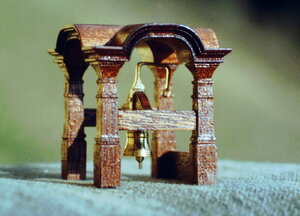
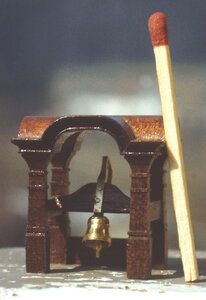
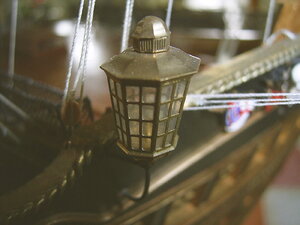
The fire buckets on the original ship and on the model. They were made from thin leather and are 5 mm in height (note the crown and the monogram GR on them):
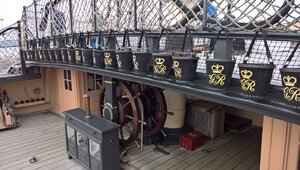
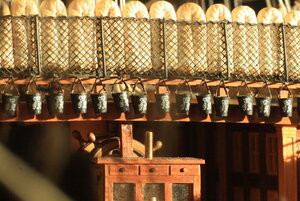
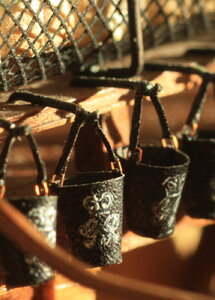
One of the anchors ( a colleage in my forum told me, the anchor rope on the original ship never was totally wormed):
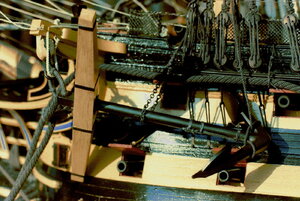
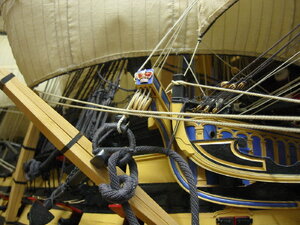
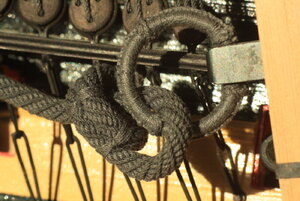
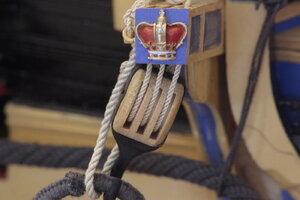
The lashing of the bow sprit and some further details:
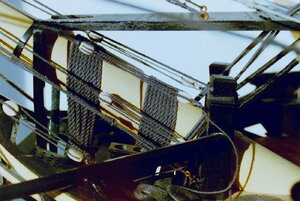
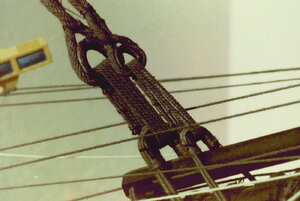
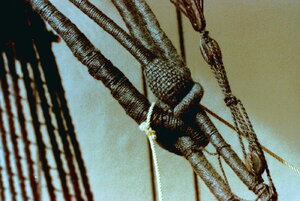
Greetings,
Hartmut
now I want to show some details of the model (I haven't forgotten the tutorial on sailmaking, it will come at the end, probably as a separate contribution):



The fire buckets on the original ship and on the model. They were made from thin leather and are 5 mm in height (note the crown and the monogram GR on them):



One of the anchors ( a colleage in my forum told me, the anchor rope on the original ship never was totally wormed):




The lashing of the bow sprit and some further details:



Greetings,
Hartmut
Attachments
Er angelt auf dem Boot?
There is no fishing - it is boatshook or hitcher in the hands....
Hartmut - these are amazing details - take a look at the sextant - never saw such filigran elements.
Also great are the correct cargo loading with the small water barrels under the thwarts - Wow Wow Wow
Hope, that you will have more often some spare time to show us much more of these details
Hartmut - these are amazing details - take a look at the sextant - never saw such filigran elements.
Also great are the correct cargo loading with the small water barrels under the thwarts - Wow Wow Wow
Hope, that you will have more often some spare time to show us much more of these details
Wow is the correct word. I did not immediately recognize the sextant, which is interesting considering I used a type of sextant as an aircraft navigator. Thank you for sharing, Hartmut.
Hallo Hartmut alias @Cirdan ,Hello and good evening,
my work leaves me little free time at the moment, but there is still enough for some pictures.
The boats of the model:
View attachment 181110 View attachment 181111 View attachment 181112
View attachment 181113 View attachment 181114 View attachment 181115
Surrounded by a division of marines: The Sextant from the picture above:
View attachment 181116 View attachment 181117
Hartmut
please do not forget, if your time allows it, to show more of this amazing model and the work of Manfred Burkert
Oh wow, I’m speechless. What an incredible modeling job. The pictures are fantastic.
Jan
Jan
Hello friends,
in this "update" I want to show some selected rigging-details of Manfreds Victory. The rigging which is shown here is way above my own horizon. I've never rigged a model, so this remains as a more theoretical part in my brain.
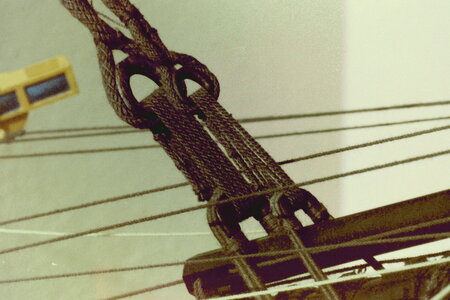
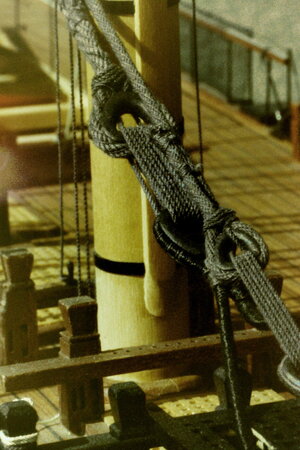
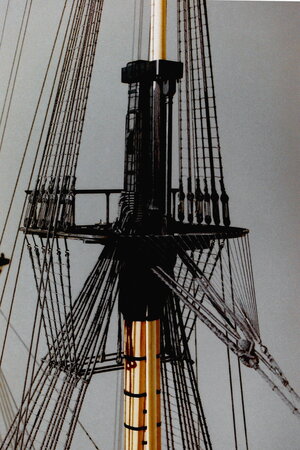
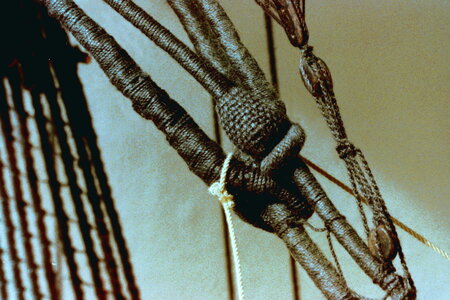
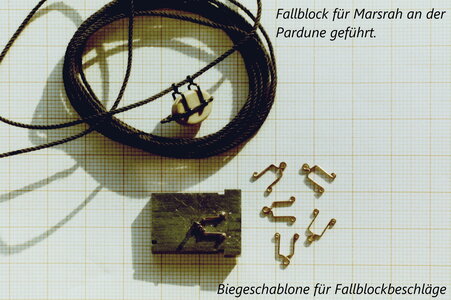
The text in the last pic means: "Halliard Block for the topsail yard, riding on the backstay" (above), "Template for the metal parts of the halliard block" (below).
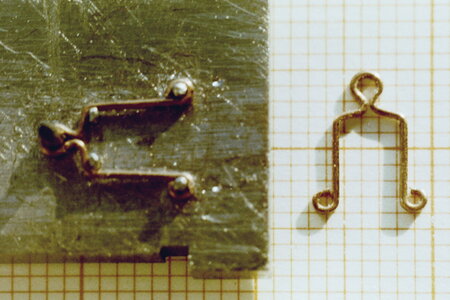
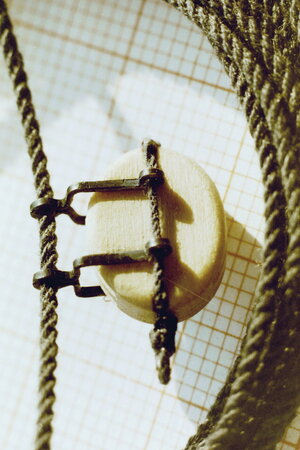

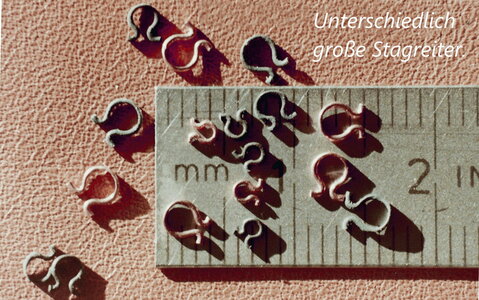
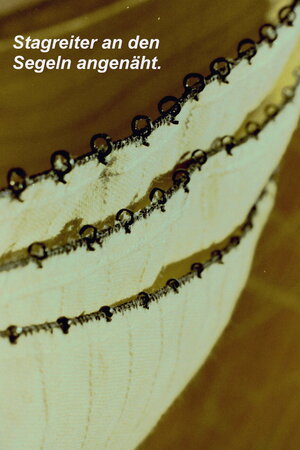
I couldn't find a translation for "Stagreiter" of various sizes in Henri Paasch's dictionary, but I think the pictures explain themselves.
The followig pics explain the making of an eye splice with a thimble (I also consulted Mr. Paasch, but I never heard the last term).
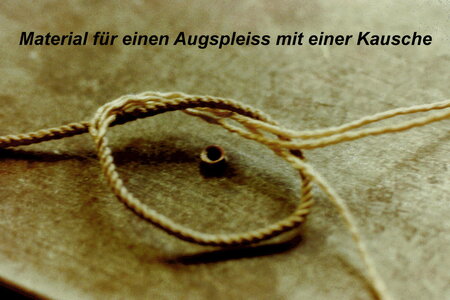
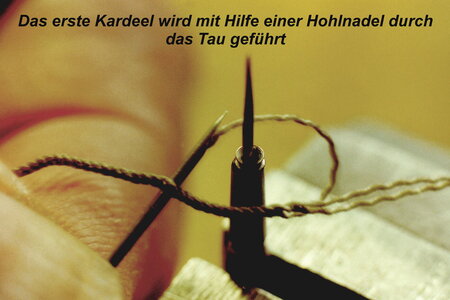
My attempted translation: "The first part of the rope (couldn't find a translation for "Kardeel") is passed through the rope with the help of a "Hohlnadel" (which means a needle with a hole in the peak). The procedure is repeated for each part of the rope.
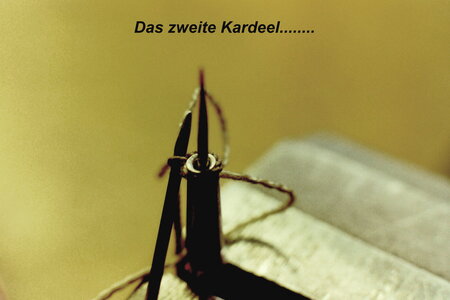
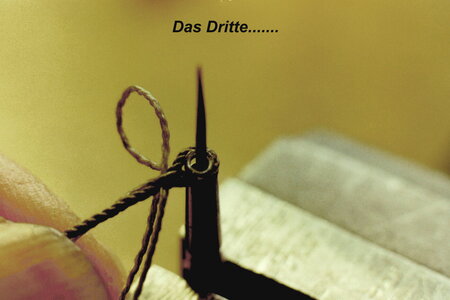
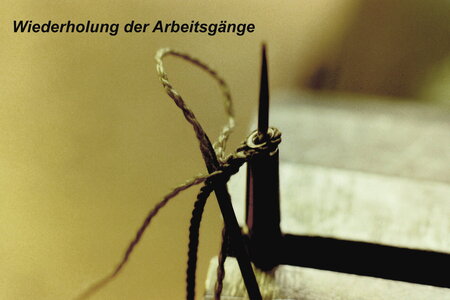
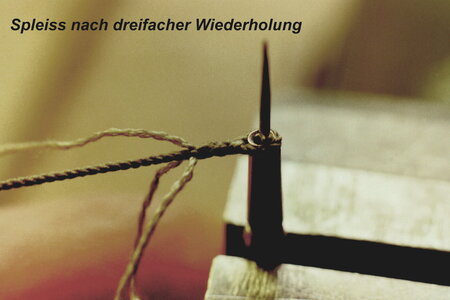
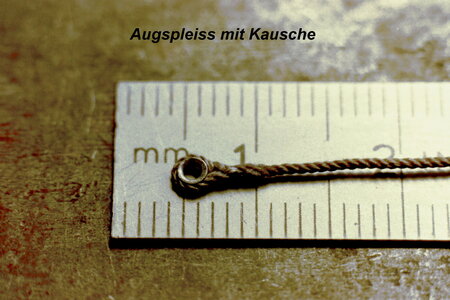
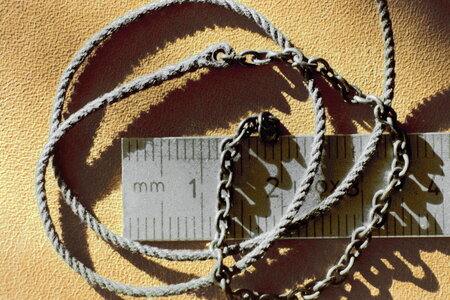
I wish you all a nice second half of the week,
Hartmut
in this "update" I want to show some selected rigging-details of Manfreds Victory. The rigging which is shown here is way above my own horizon. I've never rigged a model, so this remains as a more theoretical part in my brain.





The text in the last pic means: "Halliard Block for the topsail yard, riding on the backstay" (above), "Template for the metal parts of the halliard block" (below).





I couldn't find a translation for "Stagreiter" of various sizes in Henri Paasch's dictionary, but I think the pictures explain themselves.
The followig pics explain the making of an eye splice with a thimble (I also consulted Mr. Paasch, but I never heard the last term).


My attempted translation: "The first part of the rope (couldn't find a translation for "Kardeel") is passed through the rope with the help of a "Hohlnadel" (which means a needle with a hole in the peak). The procedure is repeated for each part of the rope.






I wish you all a nice second half of the week,
Hartmut
Mercy sakes alive!Hello friends,
in this "update" I want to show some selected rigging-details of Manfreds Victory. The rigging which is shown here is way above my own horizon. I've never rigged a model, so this remains as a more theoretical part in my brain.
View attachment 186756 View attachment 186757 View attachment 186758
View attachment 186759 View attachment 186760
The text in the last pic means: "Halliard Block for the topsail yard, riding on the backstay" (above), "Template for the metal parts of the halliard block" (below).
View attachment 186761 View attachment 186762 View attachment 186763
View attachment 186766 View attachment 186767
I couldn't find a translation for "Stagreiter" of various sizes in Henri Paasch's dictionary, but I think the pictures explain themselves.
The followig pics explain the making of an eye splice with a thimble (I also consulted Mr. Paasch, but I never heard the last term).
View attachment 186768 View attachment 186769
My attempted translation: "The first part of the rope (couldn't find a translation for "Kardeel") is passed through the rope with the help of a "Hohlnadel" (which means a needle with a hole in the peak). The procedure is repeated for each part of the rope.
View attachment 186771 View attachment 186772
View attachment 186773 View attachment 186774
View attachment 186775 View attachment 186776
I wish you all a nice second half of the week,
Hartmut
Great details in the rigging works - WOW
Many thanks for sharing with us these details - so please do not stop with sharing with us
Many thanks for sharing with us these details - so please do not stop with sharing with us
Beautiful build! Master craftsman!




